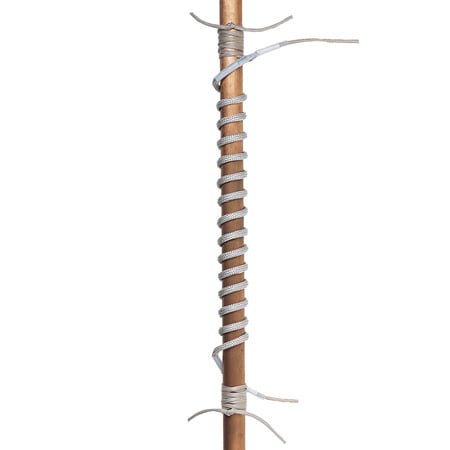Rope and Tape Heaters are flexible heaters designed to wrap around pipes, beakers, and other round surfaces. These specialized heating elements are especially useful for maintaining temperatures in processes or equipment that require consistent thermal management.
Their flexibility and efficiency make them an asset in maintaining operational integrity and enhancing process performance.
Learn More About Omega's Comprehensive Industrial Heater Selection
Rope Heaters
Rope heaters are innovative heating solutions that feature a flexible heating element encased in a durable protective insulation layer. Their unique design mimics the appearance of a rope, which allows for effortless wrapping around a variety of objects, including pipes, tanks, and surfaces with irregular shapes. This flexibility not only ensures a snug fit but also maximizes heat distribution, making them ideal for preventing freezing in cold environments or maintaining optimal temperatures for various applications. The versatility of rope heaters makes them suitable for use in industries such as plumbing, agriculture, and manufacturing, where maintaining temperature is crucial for operational efficiency and safety. Their lightweight nature and ease of installation further enhance their practicality in a range of settings.
 Typically, rope heaters are made with a series of electrical resistance wires woven into a flexible insulation material, often silicone or fiberglass. This construction allows them to withstand high temperatures and resist moisture.
Typically, rope heaters are made with a series of electrical resistance wires woven into a flexible insulation material, often silicone or fiberglass. This construction allows them to withstand high temperatures and resist moisture.
Applications
- Pipe Freeze Protection: Commonly used in outdoor or uninsulated piping to prevent freezing during cold weather.
- Temperature Maintenance: Keeps materials at a consistent temperature, ideal for viscous fluids like oil or wax.
- Industrial Processes: Used in manufacturing where maintaining heat is crucial, such as in chemical reactors.
Tape Heaters
Tape heaters are versatile, flat, and flexible heating elements designed for easy adhesion to a variety of surfaces. These heaters are particularly effective for heating flat surfaces or providing targeted heat to components in areas where space is limited. Their slim profile allows them to fit snugly into tight spaces, making them ideal for applications in electronics, automotive, and industrial settings.
 Similar to rope heaters, tape heaters are made from electrical resistance wires but are arranged in a flat format, often with adhesive backing for easy application. They may also have protective layers to enhance durability and insulation.
Similar to rope heaters, tape heaters are made from electrical resistance wires but are arranged in a flat format, often with adhesive backing for easy application. They may also have protective layers to enhance durability and insulation.
Applications
- Surface Heating: Ideal for warming surfaces like molds or tooling in manufacturing.
- Electrical Enclosures: Used to prevent condensation in electrical cabinets and control panels.
- HVAC Systems: Can be applied to ductwork to maintain air temperature or to provide heat where needed.
How Do Rope and Tape Heaters Work?
Rope and tape heaters are low watt density electrical resistance heaters designed to generate heat on a surface when voltage is applied. As constant-wattage products, they require the use of a temperature controller to ensure safe and effective operation.
Tape heaters are made from finely stranded resistance wires that are fully insulated and knitted into a flat tape, which is then encapsulated in a protective sheath. This construction allows for efficient heat transfer while maintaining durability. In contrast, rope heaters feature a circular design rather than a flat one. This rounded shape gives them the advantage of being less prone to kinking and allows for easier application on surfaces without the need for precise alignment. However, it's crucial that all sections of a rope heater maintain contact with the heated object to prevent overheating and ensure even heat distribution.
Both rope and tape heaters offer exceptional flexibility, enabling them to conform to tight contours and irregular shapes. This versatility makes them suitable for a wide range of applications across industries, from plumbing and manufacturing to automotive and electronics, where consistent and reliable heating is essential. Their ease of installation and adaptability to different surfaces further enhance their value in various heating scenarios.


